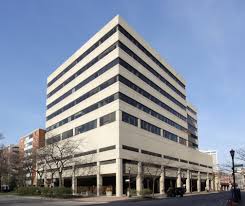 When a commercial lender underwrites a commercial loan, he will use five financial ratios - (1) the loan-to-value ratio, (2) the debt service coverage ratio, (3) the operating expense ratio, (4) the debt yield ratio, and (5) the debt ratio. We will discuss these five ratios in more detail below.
When a commercial lender underwrites a commercial loan, he will use five financial ratios - (1) the loan-to-value ratio, (2) the debt service coverage ratio, (3) the operating expense ratio, (4) the debt yield ratio, and (5) the debt ratio. We will discuss these five ratios in more detail below.
1. Loan-to-Value Ratio
The Loan-to-Value Ratio is the requested loan amount divided by the value of the property. The value of the commercial property is usually established by an appraisal performed by a Certified General Appraiser or a M.A.I. appraiser. If, however, the purchase price of the commercial property is lower than the appraised value, almost all commercial lenders will use the lower of the purchase price or appraised value in the loan-to-value ratio calculation.

Below are some typical maximum permissible loan-to-value ratios for commercial loans:
Multifamily - 75% to 80% LTV maximum
Office Buildings, Retail and Industrial Properties - 70% to 75% LTV maximum
Self Storage - 65% to 70% LTV maximum
Hospitality - 60% to 65% LTV maximum
If the capital stack includes both a first mortgage and a second mortgage/mezzanine loan, some lenders will compute a Combined Loan-to-Value Ratio, which obviously uses the sum of the first mortgage and the second mortgage/mezzanine loan in the numerator.

2. Debt Service Coverage Ratio
When making commercial loans, most commercial lenders insist that the net income generated by the property not only equal the proposed mortgage payment, but actually exceeds the proposed payment by at least 25%.
The Debt Service Coverage Ratio is defined as the Net Operating Income divided by the Debt Service, all multiplied by 100%. Debt Service is merely a fancy way of saying the annual principal and interest payment on the proposed loan.

Please note that this calculation is performed on an annual basis. You can actually squeeze out a few extra dollars in the loan amount if the calculation is done on a monthly basis using monthly payments. Sorry, Charlie. Nice try. This calculation has to be performed on an annual basis.
What about taxes and insurance? Do you add these line items to the annual debt service (loan) payment before calculating the debt service coverage ratio? No! The taxes, insurance, and required reserves are already line items in the Pro Forma Operating Statement (projected budget for the next 12 months). If you then added these costs to the debt service, you would be double-counting these costs.

Here are some typical minimum permissible debt service coverage ratios:
Multifamily - 1.20 to 1.25 debt service coverage ratio minimum
Office Buildings, Retail and Industrial Properties - 1.25 debt service coverage ratio minimum
Self Storage - 1.25 to 1.35 debt service coverage ratio minimum
Hospitality - 1.35 to 1.45 debt service coverage ratio minimum
3. Operating Expense Ratio
Just about every commercial loan borrower wants to borrow as much money against his commercial property as he can. In the debt service coverage ratio calculation, the higher the net operating income, the higher the debt service coverage ratio and the more dollars that the commercial lender will lend. Therefore the borrower will want to show his operating expenses as low as possible, and a lender making commercial loans needs to be on his guard against a borrower supplying fraudulently low operating expense numbers.

Example:
Bad-Bad Leroy Brown owns an apartment building in Chicago, where heating expenses are a major cost. When the commercial lender underwriting his commercial loan asks for his 2017 actual operating expenses, Bad-Bad Leroy supplies the actual numbers, but he cuts his annual heating cost from $61,765 to just $22,098. Bad, Leroy, bad! :-)
The Operating Expense Ratio is defined as the Total Operating Expenses divided by the Effective Gross Income of the property, all times 100%. The Effective Gross Income is the Total Income minus a Reserve for Vacancy and Collection Loss (usually 5% of Total Income). If the operating expense ratio is too low, it is likely that the borrower is supplying fraudulent expense numbers.

Below are the minimum acceptable operating expense ratios used by most commercial lenders:
Multifamily - 35% to 40% minimum
Office Buildings, Retail and Industrial - Varies based on the leases (NNN versus full service)
Self Storage - 25% to 35% minimum
Hospitality - 45% to 50% minimum
4. Debt Yield Ratio
The Debt Yield Ratio is a brand new ratio that was developed after the Great Recession in response to the huge losses suffered by CMBS bond buyers in commercial loans. In the years leading up to the Great Recession, interest rates were falling, which allowed the buyers of major commercial properties to obtain larger and larger commercial loans in terms of the loan-to-value ratio. As buyers were able to obtain extremely high leverage, they bid up the prices of major commercial properties to sky-high levels.

To make matters worse, conduits - the originators of commercial loans destined for securitization - started making commercial loans that were interest-only for the first two or three years. This allowed buyers of major commercial properties to reach insane loan-to-value's of 80% to even 83%! This further drove up the price of major commercial properties.
When the Great Recession hit, major commercial properties fell by as much as 45% and CMBS bond buyers got slaughtered. As a result, the CMBS market completely dried up. An entire industry essentially disappeared.

Five years later, in order to convince CMBS bond buyers to return to the market, the Wall Street guys developed the Debt Yield Ratio. The Debt Yield Ratio is defined as the Net Operating Income divided by the Loan Amount, all times 100%. This Debt Yield Ratio was not allowed to be less than some number on commercial loans destined for the CMBS market. When the Debt Yield Ratio was first developed in 2012, that minimum acceptable debt yield ratio was 10.0%. Since then this number has come down slightly.
Please note that the debt yield ratio has nothing to do with cap rates, interest rates, or even amortization schedules (interest-only versus a 25-year amortization). It is a cold, heartless ratio, and conduits continue to use it on all CMBS loans.
Please note that (just about) only CMBS lenders (conduits) use the Debt Yield Ratio!

Below are some typical minimum acceptable debt yield ratios:
Multifamily - 8.0% to 9%
Office Buildings, Retail and Industrial - 8.75% to 9.5%
Self Storage - 9.5% to 10%
Hospitality - 10%
5. Debt Ratio
The Debt Ratio is a residential lending ratio with which you probably battled when you first tried to buy a house. You will recall that Fannie Mae would not allow your new mortgage payment to exceed 25% of your gross income or, when combined with your other debt obligation payments, exceed 33% (38%?) of your gross income.

Now in real life, 95% of all commercial lenders will NOT look at your personal debt ratios when underwriting a commercial loan. As long as you have good credit and your net worth is at least as large of your requested commercial loan amount, commercial lenders seldom bother with personal debt ratios.
However, there is a class of commercial lender, known as a Non-Prime Commercial Lender, which may allow a negative cash flow on a commercial loan, as long as your personal debt ratios can handle the negative cash flow.

Conclusion
Commercial lenders typically use the lowest loan amount allowed by these ratios.
Example:
The CMBS lending division of Morgan Stanley is underwriting a $7 million commercial loan request on an office building in Washington, D.C. The highest loan-to-value ratio that the CMBS market will permit is 75%, and according to this ratio, the borrower could qualify for $7.1 million commercial loan. The maximum loan size permitted by the debt service coverage ratio is $6.95 million. The largest permissible loan at a 9% debt yield ratio is $6.6 million. The maximum CMBS loan that Morgan Stanley will allow is $6.6 million - the most conservative result of these three ratios.


















